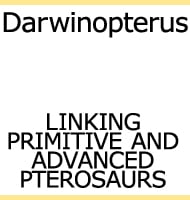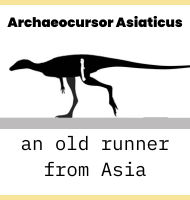In Depth
Jeholornis was a primitive bird that is known from both the Hebei and Liaoning provinces of China where individuals of the genus lived during the early cretaceous. At eighty centimetres long from the tip of the snout to the tip of the tail, Jeholornis was quite a large bird for the time. An additional bird genus named Shenzhouraptor is now regarded as synonyms to Jeholornis. There has been previous dispute over whether Shenzhouraptor should have priority over Jeholornis since they were both named so closely together with Shenzhouraptor appearing in a monthly journal and Jeholornis in a weekly one, but Jeholornis is usually treated as valid since in these circumstances weekly journals are seen to have technical priority.
Jeholornis was similar to genera such as Epidexipteryx and Incisivosaurus since those individuals also had short but high skulls. The jaws curved downwards and depending upon the fossil specimen, show a greatly reduced amount of teeth. The holotype specimen only possessed three pairs of reduced blunt teeth in the lower jaw, while another suggests no teeth at all. These were likely feeding adaptations that allowed Jeholornis to pluck up and swallow seeds, something that can be supported by the discovery of around fifty, eight to ten millimetre seeds believed to be from the plant genus Carpolithes inside what was once the crop of a Jeholornis.
Jeholornis had better developed wings than earlier bird forms such as Archaeopteryx, though they were still not as well adapted for true flapping flight as the wings of modern birds are. The wings were still longer than the legs, and the feathers were asymmetrical similar to modern birds. Like with many primitive forms, gliding flight would have certainly been possible for Jeholornis, but it is still unknown if it could use flapping flight since the arrangement of the shoulders would have still had a limited range of motion hindering a flight stroke where the wings passed above the back.
Jeholornis still lacked a pygostyle and instead had a long more dinosaur-like tail. This feature would not have made flight impossible, but it would not have been as good as a pygostyle that supported the growth of flight feathers from the tail. Analysis of the bones of Jeholornis also indicate that individuals grew very slowly, another primitive trait shared with other early bird forms, though as the Cretaceous period went on birds would develop to become very fast growing animals.
One of the key important things about Jeholornis is that the hallux (first toe) is partially reversed meaning that it was semi opposable. In modern birds the hallux is completely opposable to the other toes so that a bird can grip hold of branches, in a similar manner to how you can hold onto railings by wrapping your thumb and fingers around them. Jeholornis would not have been as capable of this as modern birds, but again more primitive forms such as Archaeopteryx lacked an opposable hallux all together and could not perch like modern birds at all. Therefore the hallux of Jeholornis shows the continuing transition to the modern bird form, helping to fill in another gap in the evolutionary theory of dinosaurs to birds.
Further Reading
- A long-tailed, seed-eating bird from the Early Cretaceous of China. - Z. Zhou & F. Zhang - 2002. - A new species of Jeholornis with complete caudal integument. - Jingmai K. O’Connor, Chengkai Sun, Xing Xu, Xiaolin Wang and Zhonghe Zhou - 2012. - Jeholornis compared to Archaeopteryx, with a new understanding of the earliest avian evolution. - Z. -H. Zhou & F. -C Zhang - 2003. - P. Senter - Scapular orientation in theropods and basal birds, and the origin of flapping flight - 2006. - Reconstructing the habits of Jeholornis prima. - Z. Li & Y. Zhang - 2008. - A new specimen of a Jeholornis-like long-tailed bird shows that Jixiangornis is a junior synonym of Jeholornis prima. - X. Wang, G. Dyke & P. Godefroit - 2012. – A new long-tailed basal bird from the Lower Cretaceous of north-eastern China. – Biological Journal of the Linnean Society 113:790-804. – U. Lefevre, D. Hu, F. Escuillie, G. Dyke & P. Godefroit – 2014.









